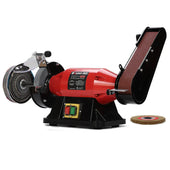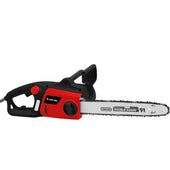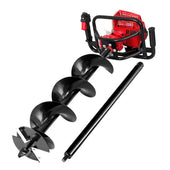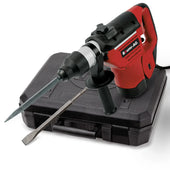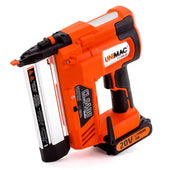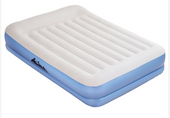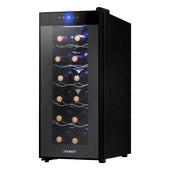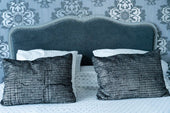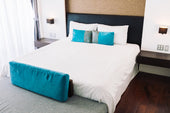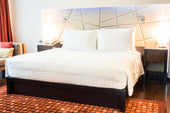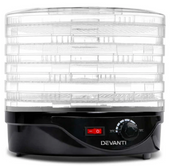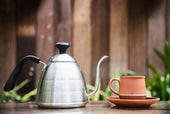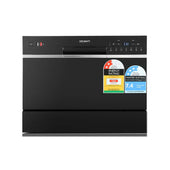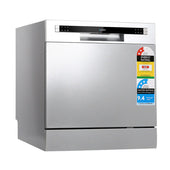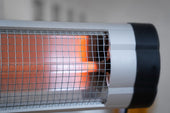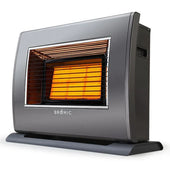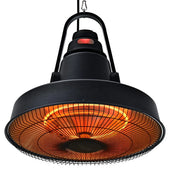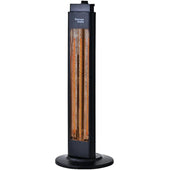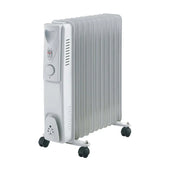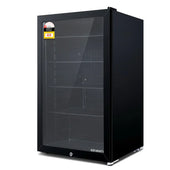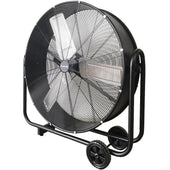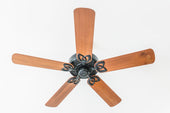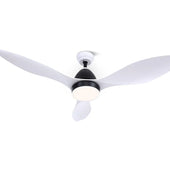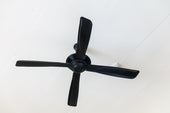Introduction: Why the Shape Matters
The shape of a dining table plays a pivotal role in determining its functionality, aesthetics, and suitability for a given space. It influences how people interact, dine, and utilise the table in various social settings. Each shape has unique characteristics, with factors like spatial constraints, seating capacity, and design harmony dictating the choice. Round tables, for instance, promote intimacy and conversation, while rectangular ones cater better to larger gatherings with structured seating arrangements. Considering the room's layout and style ensures seamless integration. A thoughtful selection enriches both practicality and visual appeal, making the shape more than just a design detail.
Assessing Your Space and Layout
Before selecting a dining table, it is essential to evaluate the dimensions and layout of the dining area. Measure the length and width of the space to determine how much room is available. Ensure there is at least 90 cm of clearance around the table for comfortable movement and chair placement.
At During Days, Consider the shape of the room—rectangular spaces often pair well with rectangular or oval tables, while square rooms may suit round or square tables. Take note of permanent fixtures like doors, windows, or built-in cabinetry. Floor plans with open layouts might benefit from versatile shapes to define the dining area effectively.
Understanding Dining Table Shapes: A Comprehensive Overview
Choosing a dining table shape can greatly influence the functionality and aesthetics of a dining space. Each shape has unique characteristics, benefits, and potential challenges that suit different room sizes, layouts, and purposes.
Common Dining Table Shapes
- Rectangular: The most traditional shape, ideal for larger spaces. It offers ample seating and works well in long, narrow rooms.
- Round: Promotes an intimate dining experience, perfect for smaller spaces. Its lack of corners allows for flexibility in seating arrangements.
- Square: Best for compact areas and casual atmospheres. It provides a balanced, symmetrical look in square rooms.
- Oval: A versatile option combining the functionality of a rectangular table with the flow of a round design.
Factors to Consider
- Room Proportion: The table shape should harmonise with the room’s dimensions to maximise comfort and aesthetics.
- Seating Capacity: Certain shapes, like rectangular and oval, accommodate larger gatherings better.
- Flexibility: Extendable options are available in many shapes, offering added versatility for varying occasions.
The Pros and Cons of Rectangular Tables
Rectangular tables are one of the most traditional and versatile shapes for dining furniture, offering distinct advantages and challenges.
Pros
- Versatility in Seating: Their elongated design accommodates a larger number of seats, making them ideal for families or gatherings.
- Space Efficiency: These tables fit well in long or narrow dining areas, optimising the use of available space.
- Classic Aesthetic Appeal: Rectangular tables complement various interior styles, from rustic to modern, due to their timeless design.
- Functionality: They often provide room for table extensions, allowing flexibility for hosting more guests.
Cons
- Space Constraints: In smaller rooms, rectangular tables may dominate the area, leaving limited space for movement.
- Uneven Interaction: Their shape can hinder face-to-face conversations, especially at longer lengths.
- Corner Seating Challenges: The corners can become awkward seating spots, reducing comfort for some diners.
Square Tables: Ideal for Intimate Gatherings
Square dining tables are perfect for creating a cosy and balanced atmosphere. Their geometric design naturally seats four people, making them ideal for small gatherings or family meals. They encourage face-to-face interaction, fostering personal connections and a sense of closeness.
In smaller spaces, square tables can be a practical option, fitting seamlessly into corners or compact dining areas. For more flexibility, extendable square tables are available, allowing for additional seating when required.
When paired with the right décor, such as matching chairs or a centralised centrepiece, square tables add a modern touch while maintaining functionality. They are an excellent choice for intimate settings.
Round Tables: Encouraging Conversation and Unity
Round dining tables inherently promote interaction and a sense of closeness, eliminating sharp corners and fostering inclusivity. Their circular design positions everyone equidistant, ensuring equal engagement during meals or gatherings. Ideal for smaller spaces, they provide a compact yet functional option while maintaining an elegant aesthetic.
Key benefits include:
- Enhanced conversation flow as participants naturally face each other without barriers.
- Space efficiency, perfect for rooms where traditional rectangular tables would feel cramped.
- Flexibility in seating arrangements, allowing for the addition of extra chairs without disrupting symmetry.
A round table seamlessly balances practicality and intimacy, making it a timeless choice for shared dining experiences.
Oval Dining Tables: Combining Elegance and Functionality
Oval dining tables are a versatile choice, offering a unique blend of style and practicality. The soft, rounded edges make them an excellent space-saving option, particularly for smaller rooms, as they eliminate sharp corners that can crowd a space. Their absence of defined corners also creates a more fluid and open seating arrangement, fostering conversation and sociability during meals.
Key Features of Oval Dining Tables:
- Aesthetic Appeal: Their curved shape adds a sense of elegance and refinement to any dining area.
- Flexibility: Oval designs often accommodate an additional seat or two without feeling cramped.
- Space Optimisation: Their elongated structure suits narrow dining spaces while maintaining a balanced visual effect.
Oval tables suit both modern and traditional interiors, thanks to their harmonious and timeless design.
Custom Shapes: Thinking Outside the Box
Custom-shaped dining tables offer endless versatility, catering to unconventional spaces and unique aesthetic tastes. These tables range from freeform designs with organic edges to geometric structures like hexagons or triangles. They can be crafted to fit challenging layouts, such as curved walls or oddly-shaped corners, making them a practical solution for non-traditional interiors.
Custom shapes are favoured for their distinctiveness, often serving as bold statement pieces. Materials like live-edge wood or tempered glass further emphasise their individuality. However, proper consideration of seating arrangement and functionality is crucial to ensure usability without compromising comfort. These designs truly reflect personal style, making a striking impact.
Materials and Maintenance: Does Shape Affect Durability?
The durability of a dining table depends not only on the material but also on its shape, which influences weight distribution and structural integrity. Round and oval tables often have a central pedestal base, reducing the risk of uneven pressure on the legs. However, excessive weight on one side may compromise their stability. Rectangular and square tables, supported by four legs or a trestle base, typically distribute weight evenly but may be susceptible to joint stress over time.
Factors to Consider:
- Material: Hardwoods like oak resist dents better than softer woods like pine.
- Joinery: Well-crafted joints ensure long-lasting frames, regardless of shape.
- Weight Distribution: Shapes with uniform geometry reduce strain points.
Matching Table Shape with Seating Arrangements
Choosing the right table shape requires careful consideration of how seating arrangements will complement its form.
- Round Tables: These accommodate smaller gatherings, fostering intimacy by allowing everyone to face each other. They work well for four to six chairs, depending on table size.
- Rectangular Tables: Perfect for large groups, these fit narrow spaces efficiently. They offer flexibility for hosting additional chairs at the ends.
- Square Tables: Best suited for compact spaces, a square table provides balance while seating four comfortably. Extending them ensures adaptability.
- Oval Tables: These blend the benefits of round and rectangular designs, maximising seating while softening sharp edges.
Align seating with table dimensions to ensure comfort and functionality.
Style and Aesthetics: How Shape Influences Design
The shape of a dining table impacts its visual appeal and complements the interior design style of a space. Round tables evoke a softer, more traditional aesthetic, often suiting cosy, intimate settings. Rectangular tables, by contrast, align with modern, structured interiors and highlight clean lines. Square tables are minimalist, ideal for contemporary or compact areas. Meanwhile, oval tables combine the elegance of round edges and the practicality of elongated shapes.
- Round: Perfect for vintage, farmhouse, or eclectic styles.
- Rectangular: Ideal for industrial and streamlined design themes.
- Square: Suits modern, minimalist styles.
- Oval: Blends traditional charm with modern utility.
The table's shape should harmonise with the overall décor, creating balance and enhancing design cohesiveness.
Adaptability for Occasions: From Daily Meals to Celebrations
The dining table serves as a versatile hub, adapting effortlessly to the demands of everyday life and special occasions. A rectangular table is ideal for hosting large gatherings, offering ample seating for celebratory feasts. Its linear design easily accommodates additional chairs or extended leaves for extra guests. Round tables foster intimate conversations, making them perfect for smaller family meals or casual get-togethers.
Extendable or drop-leaf tables offer flexibility, transforming compact spaces into dining areas suitable for entertaining. Oval tables blend the intimacy of round designs with the capacity of rectangular ones, serving both daily use and festive dinners with ease. Choosing the right shape ensures functionality meets style across occasions.
Making the Final Decision: Balancing Form and Function
Selecting the perfect dining table involves striking a harmonious balance between aesthetic appeal and practicality. While size and shape dictate functionality, the overall design must complement existing décor. For those prioritising form, tables with dramatic finishes or unique materials can make a bold statement. However, for families or hosts entertaining frequently, functionality becomes paramount, favouring designs with ample seating or extendable options.
Consider the room's purpose and traffic flow. A round table offers intimacy but may limit large gatherings, while rectangular tables are better suited for spacious rooms and larger households. Ultimately, the chosen table should fit seamlessly into the space without sacrificing comfort or utility.
Conclusion: Achieving the Perfect Dining Experience
Selecting the right dining table shape elevates not just functionality but also the ambience of the dining area. Each shape contributes uniquely, balancing aesthetics with practicality. Square tables create intimacy, while round options encourage inclusive conversations. Rectangular tables fit seamlessly in most spaces and accommodate large gatherings, whereas oval tables blend visual interest with space efficiency.
When choosing, one must consider the room's size, layout, and personal entertaining style. Harmonising the table's shape with surrounding furniture ensures cohesion. Paying attention to material, design, and proportions further enhances the setting. Thoughtful selection transforms a simple meal into an unforgettable dining experience.



